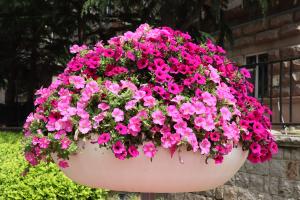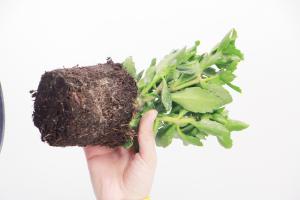How to Take Care of Your Cilantro Plant
Cilantro is an herb that is commonly used in many dishes all over the world, and it's easy to grow in your own garden or even indoors. However, taking care of your cilantro plant can be a bit challenging if you don't know how to do it properly. In this article, we will give you some tips on how to care for your cilantro plant so that it can thrive and provide you with delicious fresh herbs whenever you need them.
Planting Your Cilantro Plant
The first thing you need to do when it comes to taking care of your cilantro plant is to plant it properly. It's essential to choose a spot in your garden that receives partial sun and has well-drained soil. Cilantro prefers cool temperatures, so avoid planting it during the hottest months of the year. You can start with either seeds or seedlings, but it's always better to start with seeds to get the freshest herbs. Sow the seeds directly in the soil and water them regularly until they germinate.
Watering Your Cilantro Plant
Cilantro needs regular watering to grow well, but it's crucial not to over water it. This herb thrives in soil that is consistently moist but not waterlogged. You can choose to water your cilantro plant either from above or below, but make sure to avoid water splashing on the leaves, as this can cause fungal diseases. Water your cilantro plant once a week, or more depending on the temperature and the soil's moisture level.
Fertilizing Your Cilantro Plant
Cilantro is a relatively low-maintenance herb, but it still needs proper nutrients to grow healthy and delicious. You can use an all-purpose fertilizer once a month to keep your cilantro plant nourished. Alternatively, you can also use organic fertilizers like compost, worm castings, or fish emulsion, which are all excellent choices for cilantro plants. However, avoid using too much fertilizer, as this can cause the herb to grow too quickly and become less flavorful.
Harvesting Your Cilantro Plant
Harvesting cilantro at the right time is critical to ensure that it has the best flavor and aroma. Cilantro leaves are best harvested when the plant is young and tender. Once the plant starts to mature and develop seed heads, the leaves will become bitter and lose their fresh, herbaceous scent. You can harvest cilantro by snipping off the leaves with a clean pair of scissors or pruning shears. Don't remove more than ? of the plant at a time to allow it to regrow, and avoid harvesting during the hottest hours of the day.
Dealing with Pest and Diseases
Cilantro plants are susceptible to several pests and diseases that can damage or kill the herb. Some pests that commonly affect cilantro include aphids, spider mites, and whiteflies. They suck the sap of the plant, causing yellowing of the leaves, stunted growth, and wilting. To deal with these pests, you can use natural remedies like neem oil, garlic spray, or soap spray, which are all safe and effective. Cilantro can also be attacked by fungal diseases like powdery mildew, downy mildew, and root rot. To prevent these diseases, avoid overwatering your plant, and make sure that there is enough air circulation around the leaves.
In conclusion, taking care of your cilantro plant is not that difficult as long as you follow the right steps. By planting it in well-drained soil, watering it regularly but not excessively, fertilizing it adequately, harvesting it at the right time, and dealing with pests and diseases promptly, you can enjoy fresh and flavorful cilantro all year round!

 how many times do yo...
how many times do yo... how many planted tre...
how many planted tre... how many pine trees ...
how many pine trees ... how many pecan trees...
how many pecan trees... how many plants comp...
how many plants comp... how many plants can ...
how many plants can ... how many plants and ...
how many plants and ... how many pepper plan...
how many pepper plan...




























